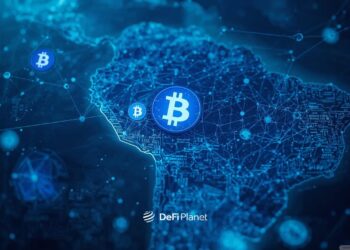Quick Breakdown
- Lower Barriers, Higher Adoption: By removing gas fees, gasless transactions make DeFi more accessible, with 151M users and 7M daily active wallets recorded in early 2025.
- Innovation and Challenges: They improve onboarding and user experience, but face hurdles like relayer trust, scalability limits, and security risks.
- Mainstream Potential: With DeFi TVL at $160.91B in Oct 2025, gasless systems could help integrate blockchain into payroll, payments, and everyday finance.
High transaction fees on Ethereum and other blockchain networks have long been a major barrier for everyday users. Even simple actions like swapping tokens, lending, or participating in DeFi protocols can cost more than some users are willing to pay, limiting adoption to only those with deep pockets.
For example, as of 2024, Ethereum’s average gas fee reached 12.50 gwei, and during network congestion, a single transaction could easily cost $50 or more, making small-scale participation impractical and slowing the growth of decentralized finance. Adopting gasless transactions could be the key to bringing DeFi into the mainstream.
What Are Gasless Transactions?
Gasless crypto transactions are a way for blockchain users to interact with dApps without paying transaction fees directly. Instead of the user covering the network’s gas costs, these fees are handled through mechanisms like meta-transactions and relayer networks.
- Meta-Transactions: In a meta-transaction, a user signs a transaction off-chain, and a trusted relayer submits it to the blockchain on their behalf, paying the gas fees. The relayer may be reimbursed in alternative ways, such as through tokens or by the dApp itself.
- Relayer Networks: These are services that handle transactions for multiple users, aggregating and submitting them to the blockchain efficiently. Relayers take on the gas costs and simplify the user experience, often charging the dApp instead of the end-user.
In traditional blockchain transactions, the user must have enough native tokens (like ETH) to cover gas fees for every action on the network. Gasless transactions remove this requirement, lowering the barrier to entry and making DeFi more accessible to newcomers or casual users who may not hold native tokens.
How Gasless Transactions Benefits Users and Developers
Gasless crypto transactions offer significant advantages for both users and developers, helping make DeFi more accessible, efficient, and innovative.

Lower Barrier to Entry for Retail Users
By removing the need to pay gas fees in native tokens, everyday users can participate in DeFi protocols without holding large amounts of cryptocurrency. This not only attracts more users but also helps diversify the ecosystem by including those who might otherwise be excluded.
Easier Onboarding and Improved UX
Gasless systems simplify the user experience by letting people interact with dApps directly, without worrying about wallet balances or complex fee calculations. A smoother onboarding process reduces friction, encouraging users to explore multiple platforms and increasing overall engagement.
Incentives for Developers to Create More User-Friendly Applications
Developers are motivated to design applications that prioritize convenience and accessibility when gas fees are no longer a barrier. This focus on usability can improve retention and foster stronger communities around their products.
Faster Adoption of New Features and Protocols
With gasless transactions, users are more willing to try new functionalities since experimenting doesn’t carry a financial risk. This feedback loop allows developers to iterate quickly and refine features based on real user behavior, accelerating innovation.
Technical Challenges
While gasless crypto transactions promise to make DeFi more accessible, they also come with complex technical hurdles that must be addressed for widespread adoption.
Relayer Trust and Fee Sponsorship Models
Gasless transactions rely on relayers to submit transactions on behalf of users, which raises questions about trust and reliability. If a relayer fails or acts maliciously, it can disrupt transactions or delay execution, so robust incentive and accountability mechanisms are essential.
Network Scalability and Congestion Issues
Even with gasless transactions, networks can become congested during periods of high activity, leading to delays and reduced performance. Platforms must optimize transaction batching and utilize layer-2 solutions to maintain speed and efficiency under heavy loads.
Security Concerns and Potential Attack Vectors
The additional layers of abstraction in gasless transactions create new attack surfaces for hackers. Smart contract vulnerabilities, compromised relayers, or improperly implemented meta-transaction logic could be exploited, requiring rigorous audits and security protocols.
Economic Sustainability of Fee Sponsorship
Continuously covering gas fees for users can become costly for dApps and relayers. Projects need sustainable models, such as token incentives or partnerships, to fund transactions without draining resources.
Compatibility Across Protocols and Chains
Implementing gasless solutions across multiple blockchains or dApps can be challenging due to differences in protocols and standards. Ensuring interoperability and seamless integration requires careful planning and ongoing updates as networks evolve.
Potential for Mainstream Adoption
By eliminating the need for users to hold or spend native tokens on gas fees, gasless systems make it easier for people to engage with lending, borrowing, and trading protocols. This could open the door for integrating DeFi features into payroll, payments, and other routine financial activities, making them practical for daily use. In January 2025, DeFi had reached 151 million users and over 7 million daily active wallets, demonstrating strong adoption potential despite previous high transaction costs.

Traditional banking is widely adopted because it is convenient and predictable, users don’t need to worry about micro-fees or technical complexities. Gasless transactions aim to replicate this ease-of-use in DeFi, giving non-crypto-native users a frictionless experience that feels familiar and reliable.
Projects like Biconomy, Gas Station Network (GSN), and OpenZeppelin’s meta-transaction frameworks are pioneering gasless solutions, while layer-2 networks like Polygon are improving speed and reducing costs.
With DeFi’s Total Value Locked (TVL) at $160.91 billion in October 2025, the sector shows significant financial scale.

This suggests that as adoption grows, we may see mainstream apps offering seamless crypto payments and DeFi services embedded in everyday platforms, bridging the gap between traditional finance and decentralized ecosystems.
Will Gasless Transactions Really Take DeFi Mainstream?
Gasless crypto transactions represent a major step toward making DeFi accessible to a broader audience. By removing the friction of gas fees, they lower the barrier for new users, simplify onboarding, and create incentives for developers to build more user-friendly applications.
However, technical challenges like relayer trust, network congestion, and security risks must be carefully managed to ensure a smooth and secure experience. Projects that successfully implement gasless solutions could bring DeFi closer to everyday financial life, bridging the gap between traditional banking convenience and decentralized innovation.
Ultimately, gasless transactions won’t just reduce costs, they could redefine how the average person interacts with blockchain technology.
Disclaimer: This article is intended solely for informational purposes and should not be considered trading or investment advice. Nothing herein should be construed as financial, legal, or tax advice. Trading or investing in cryptocurrencies carries a considerable risk of financial loss. Always conduct due diligence.
If you would like to read more articles like this, visit DeFi Planet and follow us on Twitter, LinkedIn, Facebook, Instagram, and CoinMarketCap Community.
Take control of your crypto portfolio with MARKETS PRO, DeFi Planet’s suite of analytics tools.”





















